From Generation Terrorists to Today: The Complete Manic Street Preachers Album Review
From Generation Terrorists to Today: The Complete Manic Street Preachers Album Review
Few British rock bands have maintained the intensity, intellect, and integrity of the Manic Street Preachers. From their explosive early years to their reflective modern era, the band’s discography captures political conviction, personal struggle, and a lifelong love of melody. Across three decades, they’ve evolved from rebellious punk idealists into masters of poetic rock, shaping the soundtrack of modern British alternative music.
Below, we’ll explore the band’s evolution through every album — but first, let’s answer some of the most asked questions about the Manic Street Preachers.
When did Richey Edwards disappear?
Richey Edwards disappeared on February 1, 1995, just before a promotional trip to the United States. His car was later found near the Severn Bridge, leading to widespread speculation. Despite various reported sightings over the years, he was officially declared presumed dead in 2008. His absence continues to influence the band’s music and legacy.
How many albums have Manic Street Preachers released?
As of 2025, Manic Street Preachers have released 14 studio albums, ranging from their 1992 debut Generation Terrorists to 2021’s The Ultra Vivid Lament. Each album reflects a distinct phase in their artistic evolution, blending politics, poetry, and passion.
What is the best Manic Street Preachers album?
That depends on who you ask. Many fans choose The Holy Bible for its raw emotional power, while others prefer Everything Must Go for its anthemic sound. Critics often highlight This Is My Truth Tell Me Yours as their most accomplished and commercially successful work.
Are Manic Street Preachers still a band?
Manic Street Preachers remain active and continue to record, tour, and evolve musically. Their dedication to creative integrity has kept them relevant for over three decades.
What is the meaning of the Manic Street Preachers’ name?
According to legend, the name came from an early encounter when guitarist James Dean Bradfield was busking, and a passerby called him a “manic street preacher.” The phrase stuck, reflecting the band’s intensity and lyrical preaching style.
Who writes the lyrics for Manic Street Preachers now?
Nicky Wire has been the band’s primary lyricist since Richey Edwards’ disappearance. His writing maintains the intellectual and emotional honesty that defines the Manic Street Preachers, balancing politics with personal reflection.
The Albums
Generation Terrorists (1992)

The debut album Generation Terrorists introduced the Manic Street Preachers as bold, literate, and fiercely political. Combining punk energy with arena-sized ambition, it delivered tracks like “Motorcycle Emptiness” and “You Love Us.” The band’s manifesto was clear: mix intellect with rebellion. Although critics were divided, fans loved its passion and raw honesty. Every track challenged conventions and pushed the boundaries of British rock. Over time, Generation Terrorists earned cult status for its fearless ambition and lyrical depth. It captured a band unafraid to dream of revolution through guitars and poetry. Ultimately, it remains a thrilling and essential start to the Manic Street Preachers’ story.
Gold Against the Soul (1993)

With Gold Against the Soul, the Manic Street Preachers explored a darker, more polished sound. Songs like “From Despair to Where” and “La Tristesse Durera (Scream to a Sigh)” reflected disillusionment with fame and identity. The band shifted toward grunge-inspired guitar tones while maintaining their sharp lyrical edge. Although less aggressive than their debut, it carried a deeper emotional weight. Critics noted its introspection and maturity. Over time, fans came to appreciate its melodic richness and reflective tone. Gold Against the Soul showed the Manic Street Preachers could evolve musically without losing their distinctive voice. It bridged the raw energy of their debut with the intensity that would define The Holy Bible.
The Holy Bible (1994)
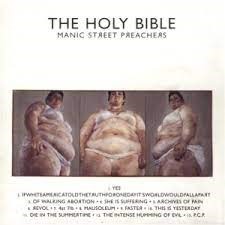
The Holy Bible stands as one of the Manic Street Preachers’ most powerful and unsettling works. It’s raw, relentless, and deeply personal. Richey Edwards’ lyrics confront despair, identity, and human cruelty with striking honesty. Tracks like “Faster” and “4st 7lb” explore mental health and societal decay. Every note feels urgent and uncompromising. Although initially polarizing, the album later gained widespread critical acclaim for its brutal honesty and artistic vision. It cemented the Manic Street Preachers as a band willing to expose emotional darkness without compromise. Even decades later, The Holy Bible remains a haunting masterpiece and a defining moment in British rock history.
Everything Must Go (1996)

Following tragedy, Everything Must Go marked the Manic Street Preachers’ rebirth. The album fused stadium-sized choruses with heartfelt emotion. Songs like “A Design for Life” and “Kevin Carter” explored class, art, and resilience. While more accessible, it never lost lyrical depth. The production, guided by Mike Hedges, gave the band a broader sonic palette. Critics praised its balance of emotion and grandeur. Commercially, it became one of their biggest successes, propelling them into mainstream recognition. Ultimately, Everything Must Go symbolizes renewal and strength for the band, blending loss with hope in unforgettable style.
This Is My Truth Tell Me Yours (1998)
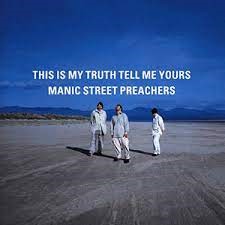
This Is My Truth Tell Me Yours brought the Manic Street Preachers global acclaim. It’s a reflective and richly melodic record exploring identity, politics, and personal introspection. Songs like “If You Tolerate This Your Children Will Be Next” and “The Everlasting” showcase both sensitivity and ambition. The band embraced a more atmospheric sound, combining lush arrangements with lyrical precision. Critics praised its maturity and cohesion. Selling over five million copies, it became their most successful album. Moreover, it showed that the Manic Street Preachers could evolve without losing their emotional honesty. It remains a cornerstone of their career and one of the defining albums of the late 1990s.
Know Your Enemy (2001)
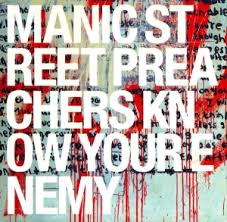
With Know Your Enemy, they embraced chaos and contradiction. The album shifts between punk ferocity and melodic introspection, reflecting the band’s restlessness. Songs like “Found That Soul” and “The Masses Against the Classes” burn with political anger and creative experimentation. Critics were divided, but fans admired its fearless diversity. It’s messy yet thrilling, showcasing a band refusing complacency. The Manic Street Preachers used Know Your Enemy to challenge both themselves and their audience. Though uneven, it remains one of their most daring and unpredictable releases.
Lifeblood (2004)

Lifeblood marked a stylistic shift for the band, embracing sleek production and introspective themes. Songs like “The Love of Richard Nixon” and “Empty Souls” explore disillusionment and self-reflection. The sound is cleaner, more atmospheric, and heavily influenced by 1980s pop and electronic textures. Critics called it subdued, yet many listeners later found its subtlety rewarding. While not a commercial triumph, Lifeblood revealed the Manic Street Preachers’ willingness to evolve. It stands as one of their most understated yet beautifully melancholic albums, bridging emotional depth with elegant restraint.
Send Away the Tigers (2007)
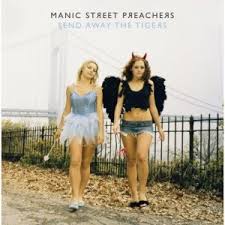
After experimentation, Send Away the Tigers brought they back to their energetic rock roots. The anthemic “Your Love Alone Is Not Enough” and “Autumnsong” highlight renewed confidence and vitality. Every track pulses with passion and melody. The album’s spirit recalls their early power but with mature songwriting. Critics welcomed its return to form, praising its balance of power and accessibility. Commercially, it revived their chart presence. With Send Away the Tigers, the Manic Street Preachers reminded fans of their enduring ability to inspire through defiance and heart.
Journal for Plague Lovers (2009)
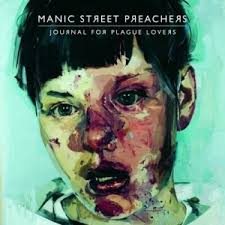
Journal for Plague Lovers revisited the lyrical world of Richey Edwards using his recovered writings. The band transformed his words into sharp, emotional songs. “Jackie Collins Ta-Ta-Ta” and “Me and Stephen Hawking” mix biting intelligence with raw emotion. Musically, it echoes The Holy Bible’s intensity but with greater restraint. Critics praised its integrity and depth, calling it a fitting tribute. The Manic Street Preachers proved they could honour the past while moving forward. This album stands as both a memorial and a creative triumph, reaffirming their enduring artistic courage.
Postcards from a Young Man (2010)
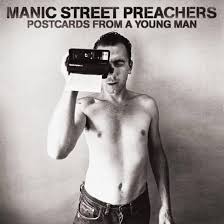
With Postcards from a Young Man, they sought to create “one last shot at mass communication.” The result was grand, melodic, and unapologetically pop-driven. Tracks like “It’s Not War (Just the End of Love)” showcase their flair for emotional anthems. The album radiates optimism despite lyrical introspection. Critics noted its confidence and lush production. Commercially, it reaffirmed the band’s enduring popularity. Ultimately, Postcards from a Young Man highlighted the Manic Street Preachers’ gift for balancing thoughtfulness with accessibility, proving they could still reach hearts and charts alike.
Rewind the Film (2013)
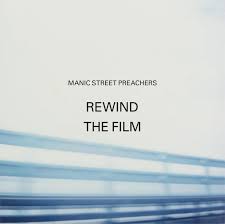
Rewind the Film stripped back the volume to reveal a gentler, acoustic side of the Manic Street Preachers. Songs like “Show Me the Wonder” reflect nostalgia and reflection. The album celebrates memory, ageing, and creativity with warmth. Although softer in tone, its lyrical insight remains powerful. Critics praised its sincerity and restraint. The Manic Street Preachers demonstrated maturity without losing spirit, crafting an album rich in emotional honesty. Rewind the Film offers comfort and wisdom, proving that quieter moments can be just as moving.
Futurology (2014)
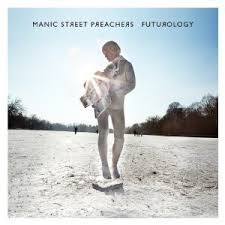
Futurology found the Manic Street Preachers looking forward with European flair and experimental energy. The album blends krautrock influences with sharp social commentary. Songs like “Walk Me to the Bridge” and “Futurology” pulse with optimism and ambition. Critics lauded its adventurous sound and lyrical precision. It stands as a companion piece to Rewind the Film, contrasting reflection with reinvention. Through Futurology, the Manic Street Preachers showed they still had creative fire and a global outlook. It’s a vibrant, forward-thinking record that reasserts their artistic vitality.
Resistance Is Futile (2018)
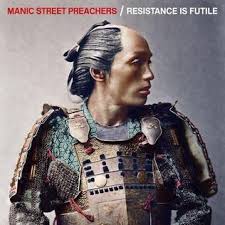
With Resistance Is Futile, the band revisited their widescreen rock roots. The album’s bright melodies mask bittersweet reflections on memory and identity. “International Blue” and “Distant Colours” recall their 1990s spirit with renewed energy. Critics praised its uplifting tone and craftsmanship. The Manic Street Preachers balanced nostalgia with optimism, celebrating endurance through creativity. Ultimately, Resistance Is Futile reaffirmed their status as resilient storytellers in modern rock.
The Ultra Vivid Lament (2021)
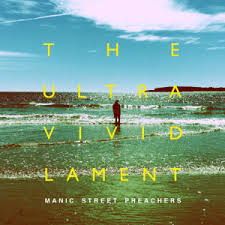
The Ultra Vivid Lament showcases a reflective, piano-driven sound . Songs like “Orwellian” and “The Secret He Had Missed” merge political commentary with melodic grace. Inspired by ABBA and 1980s pop, the album balances melancholy and hope. Critics praised its elegance and clarity. The Manic Street Preachers continued evolving while retaining their emotional honesty. The Ultra Vivid Lament proves their artistry remains sharp, offering thoughtful pop with intellectual depth and timeless appeal.
Across more than three decades, the band have built one of the most fascinating catalogues in modern rock. Their albums trace a journey from punk rebellion to philosophical reflection, from anger to acceptance. Each record adds a new layer to their story — proof that conviction and creativity never fade. Whether you discovered them through “A Design for Life” or “International Blue,” the Manic Street Preachers continue to inspire through words, melody, and unwavering authenticity.
Recent Posts
Queen studio albums: A Review
Phil Collins Albums Ranked & Reviewed – Complete Guide to Every Studio Album
The best of Massive Attack
Let’s Make Magic
Book Your Event DJ Now




